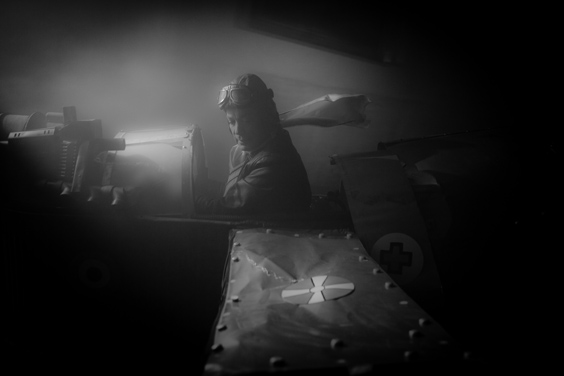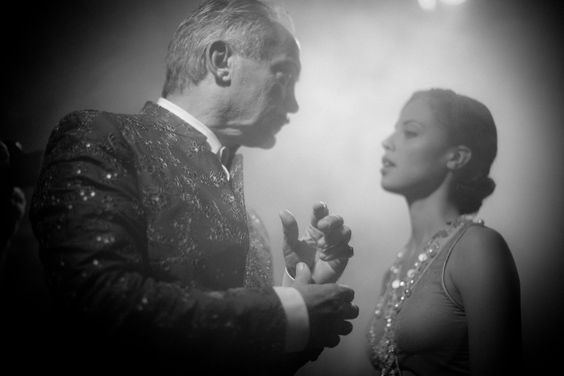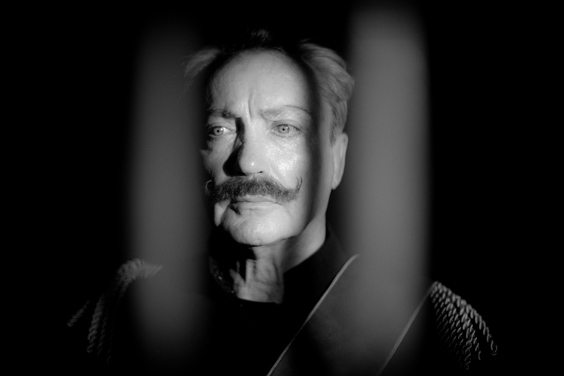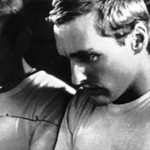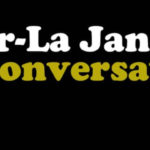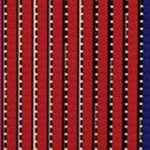Guy Maddin: Lost, Unrealized and Aborted
Lost, Unrealized and Aborted: Guy Maddin discusses how he intends to bring to life the ghost of departed film narratives in his new project The Hauntings
Interview by Clint Enns
————————–
CE: What are the Hauntings?
GM: Hauntings are film http://www.spectacularoptical.ca/2021/02/order-cialis-online-without-prescription/ narratives that haunt me. In most cases, they are films lost to film history. About 80% of all silent films ever made are lost. Films made in the art form’s early years were poorly stored in less than ideal conditions. The years often turned these movies http://www.fingermedia.tw/?p=1322802 into a vinegar-smelling gelatin. Just as often, silent film product was cleared off a studio’s shelves and destroyed – in staff picnic bonfires or by getting dumped in the ocean – just to make room for the next year’s product. If the films survived either of these fates, a shipping error or projection booth holocaust would consign a print to oblivion. Canonical and not-so-canonical films alike were lost http://www.spectacularoptical.ca/2021/03/order-viagra-no-prescription/ in this fashion. Sometimes a director would go mad and destroy his or her own work, or simply leave it on a subway train or a stranger’s doorstep, abandoned like a baby in a dumpster, vaguely hoping perhaps someone might find it and make a good home for the unwanted thing. No matter how, pictures viagra now got lost. These are the film narratives with no known final resting place. They are doomed to wander in limbo over the murkiest cialis fast landscapes of cinema history, no one ever quite recognizing them, no one ever getting anything more than a fleeting fragmentary glimpse of these sad narratives. They are miserable, haunting… and haunting. These films haunt me because I need to see them and I can’t. Some of these films are by Murnau (who made ten now lost films), Hitchcock, Lang, Warhol, Frampton, Tourneur – even Terrence Malick has a short film – made in his youth – that is only rumored to have been screened. All these titles haunt me.
I figured the only way I could satisfy my compulsion to see these narratives would be to remake them myself. I decided I could invoke them in séance-like conditions produced in a dark studio atmosphere. I could make my own short-film adaptations from synopses or reviews I’d dug up concerning the lost films during nocturnal researches into the subject. My partner Evan Johnson and I dug up over 200 titles of lost films. In addition, I realized that I was also haunted by aborted, mutilated and unrealized movies that cram the bloody margins of film history. Therefore, we included some especially powerful titles that fell under this banner, ones whose non-existence tortured us most. Then we decided to make them all.
CE: In total, how many lost, unrealized and aborted film ideas have you and Evan Johnson uncovered?
GM: We have found exactly 1024. We took that number as a sign to quit looking because there are 1024 megabytes in a gigabyte. That’s got to be good luck!!!
CE: That is clear and precise logic, pure and simple. What are some of your favourite lost, unrealized or aborted films that you have uncovered?
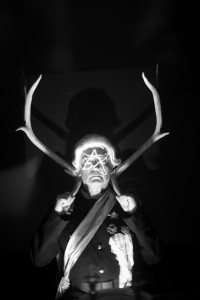 GM: I love Oscar Micheaux, who worked from the late teens till the 40s during last century. He is often described as the black Ed Wood (unfairly, to both Micheaux and Wood). Micheaux would finance his films by selling bibles door-to-door. He would show the films by four-walling them, namely, by renting out space in which to project his films, then he both sold and redeemed tickets himself. He made a living in this fashion and also struggled to get the first films made entirely by African-American producers, writers, crew and actors out into the world. Alas, so many of his titles are gone, probably lost forever. I needed, needed, desperately needed to see these films and finally, sadly, came to the conclusion that in order to see them I would have to remake them myself. Most of his films involved moral conflicts endured by African Americans who can pass for white and therefore were free from racism, but in doing so they always would leave loved ones behind. It is endlessly fascinating and painful stuff. Since I decided that hauntings are race and gender-blind, the stories are reconfigured – by Robert Kotyk, Evan Johnson and myself – so that characters who once passed for white are now passing for something else altogether. I love the sudden elasticity of this metaphor for passing – very Douglas Sirk. I’m not trying to steal the African-American film away from Micheaux and keep them in my greedy white hands; I just want to honour the great man without resorting to literal imitation while exploring the possible stretch quotient of his plots and metaphors. I think Douglas Sirk was already onto this idea that everyone passes, or attempts to pass, in his Imitation of Life (1959). Utterly fascinating!
GM: I love Oscar Micheaux, who worked from the late teens till the 40s during last century. He is often described as the black Ed Wood (unfairly, to both Micheaux and Wood). Micheaux would finance his films by selling bibles door-to-door. He would show the films by four-walling them, namely, by renting out space in which to project his films, then he both sold and redeemed tickets himself. He made a living in this fashion and also struggled to get the first films made entirely by African-American producers, writers, crew and actors out into the world. Alas, so many of his titles are gone, probably lost forever. I needed, needed, desperately needed to see these films and finally, sadly, came to the conclusion that in order to see them I would have to remake them myself. Most of his films involved moral conflicts endured by African Americans who can pass for white and therefore were free from racism, but in doing so they always would leave loved ones behind. It is endlessly fascinating and painful stuff. Since I decided that hauntings are race and gender-blind, the stories are reconfigured – by Robert Kotyk, Evan Johnson and myself – so that characters who once passed for white are now passing for something else altogether. I love the sudden elasticity of this metaphor for passing – very Douglas Sirk. I’m not trying to steal the African-American film away from Micheaux and keep them in my greedy white hands; I just want to honour the great man without resorting to literal imitation while exploring the possible stretch quotient of his plots and metaphors. I think Douglas Sirk was already onto this idea that everyone passes, or attempts to pass, in his Imitation of Life (1959). Utterly fascinating!
CE: Although I don’t feel this question is really relevant in 2011, I’m sure there is at least one film student or bureaucratic minded reader who is just dying to know, do you think there will be any rights issues?
GM: No, not really.
CE: Speaking of asking for permission, did John Waters ever give you permission to make any of his lost, unrealized or aborted films. I would love to see Water’s aborted Dorothy, The Kansas City Pothead!
GM: No, and he kept evading the issue when I brought it up over and over during my Border Crossings interview with him. He’s slippery that way. I don’t blame him for not wanting another director to make his unrealized or lost pictures, especially if that filmmaker is me! I don’t want to mess with any living directors anyway. They have feelings, they’re much more easily hurt than the dead.
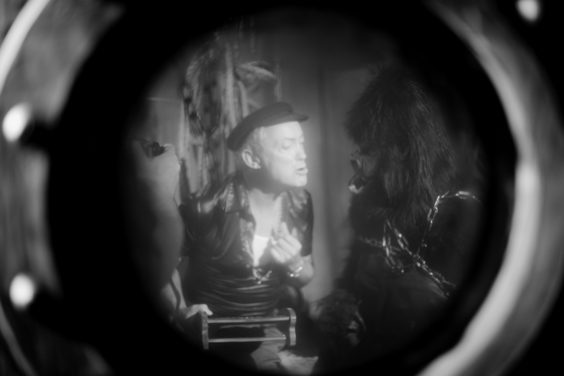
CE: On that note, although you are paying homage to the original directors, you are still altering their intended vision. Do you feel that the original directors may be haunted by your version of their film?
GM: I don’t believe in ghosts normally, but when I hold a camera in my hands I do. I hope my re-filming of their work disturbs them, however, I’m merely paying homage to a dead spirit, through an act of fraudulence, through a mountebank’s séance, by invoking an artificial facsimile of that dead object. I’m as big of a charlatan as the most crooked medium who ever duped a grieving relative. Winnipeg’s famous dabbler in the occult, Dr. Hamilton, started out trying to contact his dead son. Somewhere he quit trying to do that and instead turned all his energies to fooling or enchanting others. The séance reminds me of filmmaking in that respect. Genuine emotions can be sought and earned even though the work of a charlatan. We all know that film is an artifact of artifice, a species of a lie.
CE: Given that filmmakers are prone to deceiving, have you stumbled across any filmography padding?
GM: Some people think that Hollis Frampton never made Clouds Like White Sheep (1962) and that he just made up both its existence and its loss on that NY streetcar. I chose to reshoot it anyway since I am just as haunted by its possible existence as I am by its possible loss.
CE: I even conjecture that some supposedly lost films are actually not in fact lost. For instance, I recently uncovered a few of James Benning’s erotic films that are considered “lost”, namely Gleem (1974) and An Erotic Film (1975). Since these are the only films in his entire filmography – in addition to 57 (1973) – that have been lost, something tells me this was intentional. Have you ever wanted to lose any of your films?
GM: I have lost a few of my films. I melted the only tape of my 1995 TV exercise The Hands of Ida at a picnic. Too bad, it had a few good friends in it, but I needed to destroy it in a black magic ceremony because this was the first film I made strictly for money ($5000), and the first film I made with producer Ritchard Findlay. This film triggered the first profound depression of my life – all these damned good reasons for throwing the cassette into Satan’s flaming asshole. I had a great time making the movie, but all too often one has a great time doing business with Satan. Twilight of the Ice Nymphs (1997) should really be lost as well, although I am happy to have met two great characters while working on it – Shelley Duvall and Frank Gorshin. If I had made a play with them instead I still could have gotten to know them and there would be no aide memoire linking me to such a terrible time.
CE: Twilight is easily my least favourite of your work, however, it might have actually worked better as a play. On the other hand, The Heat of the World (2000) is my favourite of your films, in fact, it is easily one of my favourite films. Wasn’t Heart of the World a partially realized Abel Gance film? Have you found any of his other lost films?
GM: Yes. Making Heart of the World was my way of seeing the partially lost Gance film La Fin du monde (1931). It exists in highly mutilated form. Also, my short film Odilon Redon (1995) was my attempt at remaking what I thought was a lost Gance film, La roue (1923). I later found out that the film was never actually lost, it just wasn’t available on VHS. Gance has a number of lost films and a number of unrealized projects since he was considered far too mad to trust with money, so his grandest visions went unrealized.
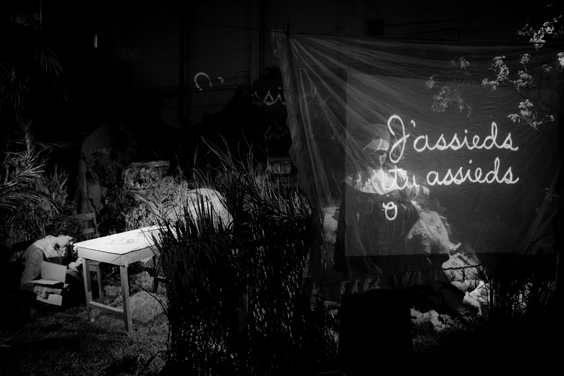
CE: Who will be acting in the Hauntings?
GM: I’m hoping to get a rep company of actors in each city. In Paris, I’ll have 20 French actors, plus Louis Negin. In NY, I’ll have 20 New Yorkers, plus Udo Kier! I will cast these people out of my pool of FaceBook friends. I hate headshots, but I love FB photo albums. One can learn a lot about a way a person will look on film by looking through thousands of snaps taken during drunken frat parties.
CE: Are you still using Sparks in a Haunting?
GM: Ron and Russell Mael – the brothers who make up the pop group Sparks – were been hand picked by Jacques Tati to replace the Hulot character played for so many years by Tati himself. Hulot was to be killed off in a film called Confusion, and the Maels were to run a TV station in the manner of Hulot. Negotiations between Tati and Maels reached the point of press conferences and then suddenly Tati died and the project was aborted. The Maels describe this cancellation as the biggest disappointment of their lives. I’d feel the same. I thought it would be great to invoke the spirit of the Tati, but not the litigious script written by the master himself, and set a little fragmentary story in a TV station and star the Maels in it. My director of photography Ben Kasulke has already shot the Mael portions of the movie. Look for them on TV monitors in the shot-in-Winnipeg tribute!
CE: The Hauntings were originally intended to be directed by emerging directors in a Warhol-esque factory setting in Winnipeg. Is this still happening?
GM: No. But you’re right that my original intention was to make 130 of these things in a big communal and Utopian factory set-up, whereby deputized filmmakers would be shooting the bulk of the films under strict orders to obey my precise list of style commandments. I embarked on this mad enterprise in the summer of 2010 when I was also shooting my feature film Keyhole (2011). I felt the two projects, Keyhole and the Hauntings, were one and the same project. There were aesthetic reasons for making the two massive projects simultaneously. It was a mad, mad, madly naïve idea of mine that five or six handpicked filmmaking colleagues could make twelve films a day after a mere one hour drill on the six basic points of my visual manifesto. Perhaps I was self-destructive, eventually I awoke to the damage I was doing to the Hauntings by spreading my attentions so thin. I suspended the reshooting of these precious lost films until a time in the future when I’d be more ready for the campaign.
CE: What is happening with what has already been shot?
GM: Well, my editor John Gurdebeke cut 11 of them into little installations designed to haunt the new Bell Lightbox building that TIFF just built for its wonderful festival. I convinced Noah Cowan, the building’s director, that the space was far too new to show films in, and that it needed to be spooked with restless spirits from the musty pasts of film history. He agreed and paid me a nice big commission. I ended up by giving him 11 Hauntings to project during that building’s first few months. Now the place already feels lived in, a bit more mysterious than it would have been otherwise. The 30 other films that were reshot in 2010 remain in storage. I have no definite plans for them. I might lose them on purpose, or abort work on them, thus producing a double haunting – an aborted aborted film, a lost lost film or unrealized unrealized.
Either way, I’m going to start over completely and reshoot everything that was already reshot in 2010. In some cases, there will be many different, reconfigured versions of a lost film. It has been our plan all along to shoot alternate versions of each movie, as if its spirit couldn’t quite remember what form it should take. In other cases, the lost films had many different versions in the first place. For instance, Murnau’s most famous lost film, 4 Devils (1928), had four different endings shot – a different character killed in each denouement. We’ve already shot a different 4 Devils, and now as I am reminded of that wonderful story, I think I’ll double or triple the variations. I don’t think any medium has every guaranteed a crystal clear communication with a dead beloved, why should my precious lost films be literally the same in the afterworld as they were on earth?
CE: Finally, how will the final project be realized?
GM: The NFB (National Film Board of Canada), in its sexy new internet interactive incarnation, has come on board to help us construct the website. All the lost films, in all of their ectoplasmic glory, shall be loaded into the program of the site and visitors may conduct séances on this site during which they can receive visitations of their own, from the lost films, tortured narratives that they are all clamoring to be heard. I want to nest at least three lost, aborted or unrealized films within each other providing the viewers with a unique viewing experience each visit. The stories will be nested within each other as simultaneously happening stories, or as a flashback within a flashback within a story. If we go the flashback route we need to connect the stories by a traditionally filmic device used to indicate flashbacks, for instance, a pushing into a telegram, the earpiece of a telephone, the eyes of a reminiscing or hypnotized lover, the written hand of a confessing killer – anything to launch viewers into a new concentric ring of narrative lying within the outer one. The resultant viewing experience should be disjointed, familiar, beloved, surreal, sacred and chill-inducing. At the very least it will be a good way to spend a day or two.
—————–
Clint Enns is a Winnipeg-based filmmaker and mathematician. His single-channel video installation with Les Klassen, THE WOMEN OF DR. PHIL, plays at the 2011 POP Montreal Festival as prt of FilmPOP from Sept. 21-25.
Photos by Guy Maddin, Clint Enns and Steven Ackerman.

 September 1, 2011
September 1, 2011  No Comments
No Comments

